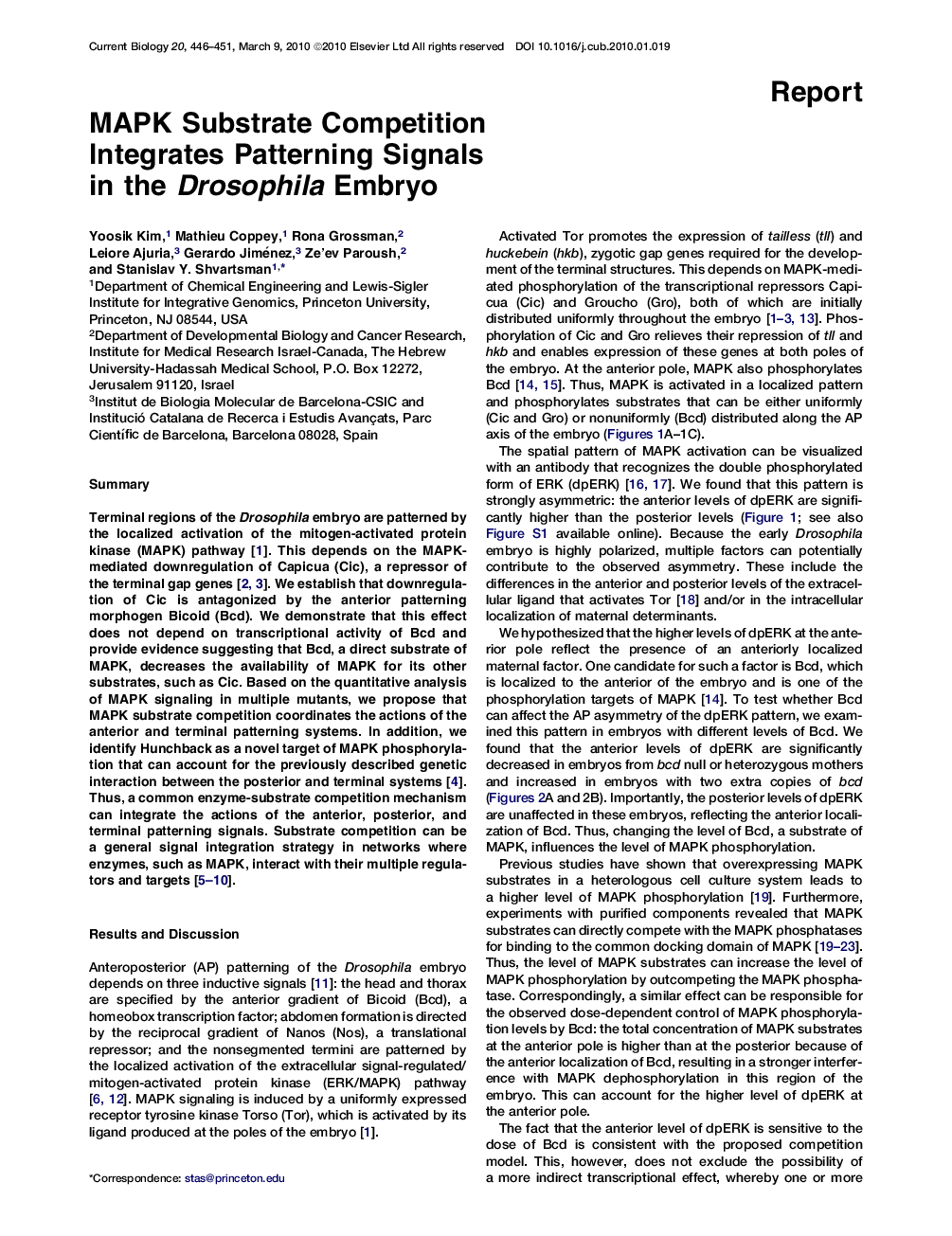| Article ID | Journal | Published Year | Pages | File Type |
|---|---|---|---|---|
| 2043155 | Current Biology | 2010 | 6 Pages |
SummaryTerminal regions of the Drosophila embryo are patterned by the localized activation of the mitogen-activated protein kinase (MAPK) pathway [ 1]. This depends on the MAPK-mediated downregulation of Capicua (Cic), a repressor of the terminal gap genes [ 2 and 3]. We establish that downregulation of Cic is antagonized by the anterior patterning morphogen Bicoid (Bcd). We demonstrate that this effect does not depend on transcriptional activity of Bcd and provide evidence suggesting that Bcd, a direct substrate of MAPK, decreases the availability of MAPK for its other substrates, such as Cic. Based on the quantitative analysis of MAPK signaling in multiple mutants, we propose that MAPK substrate competition coordinates the actions of the anterior and terminal patterning systems. In addition, we identify Hunchback as a novel target of MAPK phosphorylation that can account for the previously described genetic interaction between the posterior and terminal systems [4]. Thus, a common enzyme-substrate competition mechanism can integrate the actions of the anterior, posterior, and terminal patterning signals. Substrate competition can be a general signal integration strategy in networks where enzymes, such as MAPK, interact with their multiple regulators and targets [ 5, 6, 7, 8, 9 and 10].
► Spatial pattern of MAPK signaling in the early Drosophila embryo exhibits AP asymmetry ► Bcd is a competitive inhibitor of MAPK-mediated downregulation of Cic ► Hunchback is a new substrate of MAPK in the embryo ► MAPK substrate competition is a new mechanism for patterning signal integration
